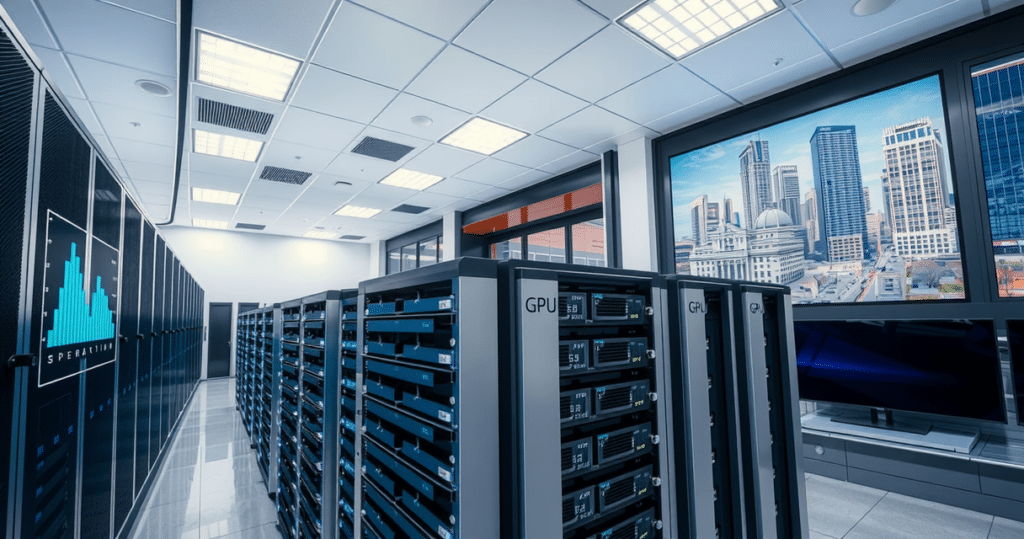IDTechEx‘s latest report, “Hardware for HPC and AI 2025-2035: Technologies, Markets, Forecasts“, provides data to show that the use of graphics processing units (GPUs) within high performance computing (HPC) has been increasingly adopted since the introduction of generative AI and large language models, as well as advanced memory, storage, networking, and cooling technologies.
Drivers for HPC systems
HPC systems solve some of the most advanced computational problems, which requires extensive amounts of processing power, memory and storage. A significant driver for HPC comes from the increasing volume of voice and data traffic that has come from the digital transformation. This demands the need for powerful computing systems capable of processing and analyzing this vast influx of data. More data also allows larger and more complex simulations and models to be built, which are necessary for scientific discovery, security, and technology advancements, with the most powerful HPC systems currently being used for scientific and financial computing on a national level. These workloads could include climate modeling, molecular dynamic simulations, and economic forecasts.
A major catalyst for growth has been the integration of AI into HPC workflows, where a convergence of the two unlocks opportunities in various fields by combining the powerful computational power of HPC with the intelligent data processing and “decision-making” of artificial intelligence. Some notable use cases have already risen, such as using AI to enhance HPC simulations – this has been seen with the National Centre for Atmospheric Research, which has done exactly this when modeling climate change impacts using AI-enhanced HPC simulations.
One of the main use cases however, and what has dominated the media in recent years, is for advanced machine learning and AI. Large language models like ChatGPT are trained using HPC systems, which require these systems to learn from vast data sets in order to deliver accurate results to the millions of users worldwide. Autonomous vehicles like Tesla or Waymo, must also use HPC to train and refine AI models for its self-driving cars, which require processing of large amounts of sensor data and running complex simulations. None of these applications would be possible without the scaling up of HPC infrastructure and the integration of AI optimizations within them.
HPC systems architectures
HPC systems are widely utilized in high-performance data centers and in hyperscalars used by cloud providers like Amazon, Google, or Meta. Traditionally, companies would process their data locally with on-premises systems, however with the expanding requirements of both HPC and AI compute, the hardware itself becomes too costly to own. Cloud providers instead take on the cost burden and rent out hardware for use on the cloud by businesses and developers. Companies can still maintain some on-premise infrastructure but will switch to hybrid public and private cloud solutions for more flexible HPC structures. What hardware is it that incurs these soaring costs? The answer lies with GPUs and other AI accelerators, which facilitate the ever-increasing need for higher performance, faster processing, and more parallelism.
HPC hardware
CPUs (central processing units) and GPUs have similar core components but very different architectures. In traditional HPC systems, CPUs have been used for processing due to their ability to process tasks serially with low latency and high speeds. Many special features have helped them do this, such as their ability to optimize output by executing tasks in a different order than they were received.
GPUs, on the other hand, have much simpler cores, allowing them to be much smaller. This allows them to be used for tasks with lots of data that require high levels of parallelism, making them suitable as coprocessors and accelerators. Data within IDTechEx’s latest report shows an increasing use of GPUs and their rising dominance since the introduction of AI.
Traditional HPC vs HPC with AI
Traditional HPC is known for completing computationally intensive tasks like automation of stock trading, weather modeling, and DNA sequencing, which require a large number of crunching capabilities. These workloads require high-precision computing powers to achieve scientific accuracy. Using CPUs, these systems can complete these tasks with high precision, necessary for financial, governmental, or military needs.
HPC hardware has had to change to accommodate the introduction of AI, meaning CPUs are being paired with general purpose GPUs or application specific accelerators to carry out highly parallel tasks, and tasks that use low precision data formats for AI training and inference. GPUs can take on larger-scale parallel processing and higher volumes of data, allowing them to process data much faster than CPUs. This allows for much faster processing of HPC workloads, and with AI workloads, it is especially necessary for real time inference and fast data movement in AI training. Specific innovations in GPU technology, such as tensor cores and software solutions, accelerate these capabilities further and will often sacrifice data precision to achieve the highest efficiencies and processing speeds.
GPU technologies and forecasts
IDTechEx’s report, “Hardware for HPC and AI 2025-2035: Technologies, Markets, Forecasts”, explores these GPU technologies and their microarchitectures in greater detail, as well as industry trends in design, fabrication, and packaging. The report also has extensive coverage on other HPC hardware, with similar breakdown and analysis of memory, storage, networking, interconnects, and cooling technologies, as well as how they integrate within data centers and exascale supercomputers. The report also covers players within the market and predicts growth and uptake for different processing units over the next 10 years.
To find out more about this IDTechEx report, including downloadable sample pages, please visit www.IDTechEx.com/HPC.
For the full portfolio of semiconductors, computing, and AI market research available from IDTechEx, please see www.IDTechEx.com/Research/Semiconductors.
About IDTechEx
IDTechEx provides trusted independent research on emerging technologies and their markets. Since 1999, we have been helping our clients to understand new technologies, their supply chains, market requirements, opportunities and forecasts. For more information, contact [email protected] or visit www.IDTechEx.com.


